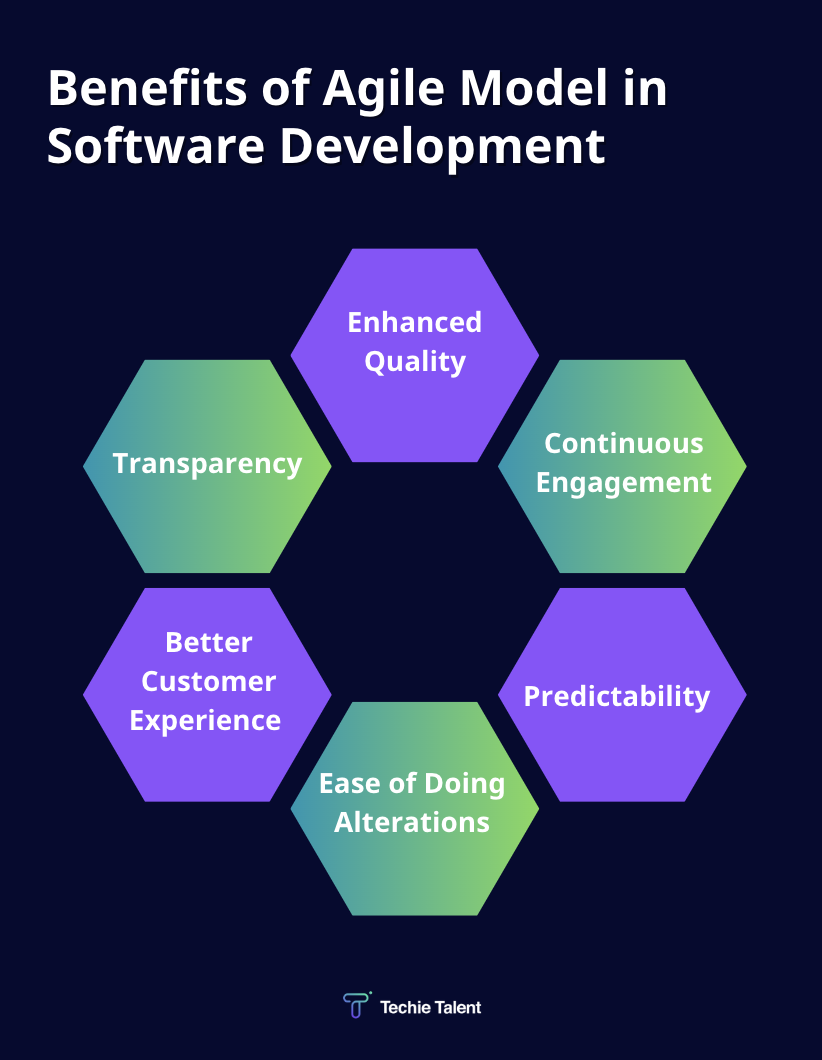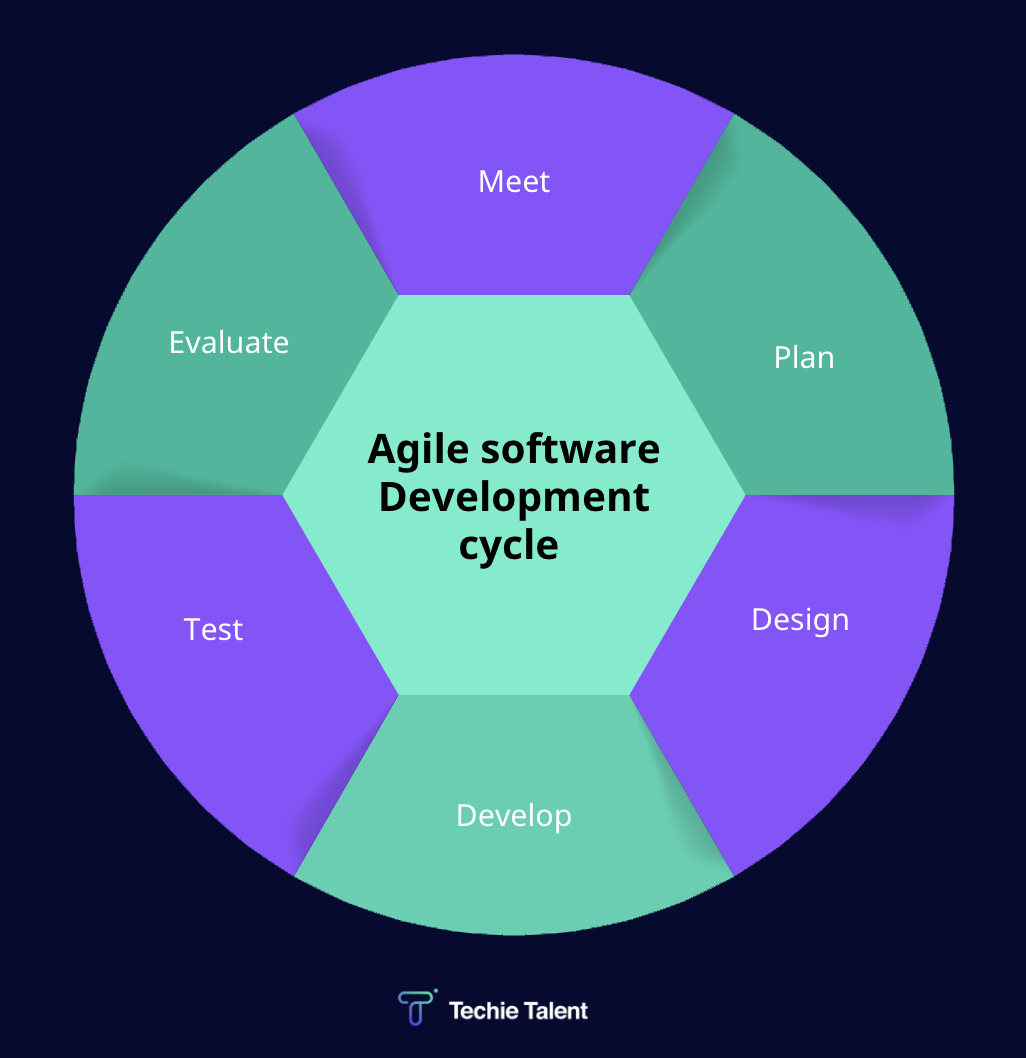Subscribe to Our Insights
Thank you! Your submission has been received!
Oops! Something went wrong while submitting the form.
Our Hubs
Resources
Company
© 2025 Cresteo. All Rights Reserved.

With the current customer demands and IT technologies created to fulfill them constantly evolving, traditional development practices often struggle to keep up. That’s where Agile comes into play, a software development methodology that has quickly become the gold standard for companies looking to remain competitive. Since its inception in the early 2000s, Agile has revolutionized the way teams work by promoting flexibility, collaboration, and iterative progress. Taking its impressive philosophy into account, it’s no surprise that 71% of organizations have adopted Agile practices in some capacity - according to the latest State of Agile report.
In this article, we will dive into the Agile Software Development Life Cycle and explain how it works - from planning and inception to deployment and retrospective. Whether you're new to Agile or looking to refine your implementation, this guide will provide a step-by-step overview of each phase and offer insights into how Agile technology solutions can transform your development process.

Agile is a software development methodology that promotes flexibility, collaboration, and continuous improvement. Unlike other traditional approaches, this is designed to be adaptive, with iterative cycles that allow this development methodology’s teams to respond quickly to changes in project requirements or market needs. It focuses on delivering functional software through short development cycles, called sprints, where the emphasis is on continuous customer feedback and incremental progress. This results in faster delivery times, improved product quality, and greater alignment between developers and stakeholders. The key principles of Agile include:
Over the past two decades, Agile has evolved from an emerging software methodology to a widely adopted standard in software development. According to the 2023 State of Agile report, 90% of organizations are now using some form of Agile methodology to streamline their software development processes. Moreover, the same report highlights that 74% of Agile users experience faster project delivery, while 71% see enhanced collaboration and communication between teams.
This rapid adoption rate underscores Agile’s ability to meet the demands of modern development environments. The flexibility, speed, and focus on customer feedback make Agile project management a standout solution for organizations looking to accelerate their software agile development lifecycle without sacrificing quality. The rising trend toward adopting DevOps and the rapid pandemic-induced normalization of remote work has also fueled Agile’s growth, as its principles align extremely well with distributed, collaborative teams.
Three of the most commonly used Agile frameworks are:
The more traditional software methodologies follow a linear, sequential approach to software development, where each phase (planning, design, development, testing) must be completed before the next can begin. While this works well for projects with well-defined, unchanging requirements, it often struggles to adapt to new information or shifts in project scope.
Agile, on the other hand, thrives in environments where change is constant. Here's a brief comparison highlighting why Agile is preferred in modern software development:

The Agile Software Development Life Cycle (SDLC) is structured yet flexible, enabling teams to deliver high-quality software through iterative processes. Here are the six main phases of the Agile SDLC:
The Agile journey begins with the Concept/Planning phase, where the initial requirements are gathered, and a project vision is crafted. This phase involves:
Once the planning is complete, the project moves into the Inception phase. This involves:
Inception sets the stage for effective collaboration and project management throughout the agile development lifecycle.
The Iteration/Development phase is where the actual coding takes place, structured into sprints. Key aspects include:
This iterative approach fosters a sense of ownership among team members and ensures continuous delivery of value.
In Agile, Testing/Quality Assurance is integrated throughout the development process rather than being a separate phase at the end. This includes:
Following successful testing, the software enters the Deployment/Release phase. Key activities include:
This phase is critical for validating the product against customer needs and expectations, allowing for quick iterations based on real-world usage.
The final phase of the Agile software development life cycle is the Review/Retrospective, which involves:
If you’re looking to improve your Agile development process, our nearshore technology experts at Techie Talent can guide you through every step of the Agile project lifecycle. Our services also include nearshore custom development to help you create your dream applications without extenuating your current resources. We can work together to help you create a more responsive, collaborative, and successful development environment. Contact us today to learn how we can help you adopt Agile methodologies and drive innovation in your organization!